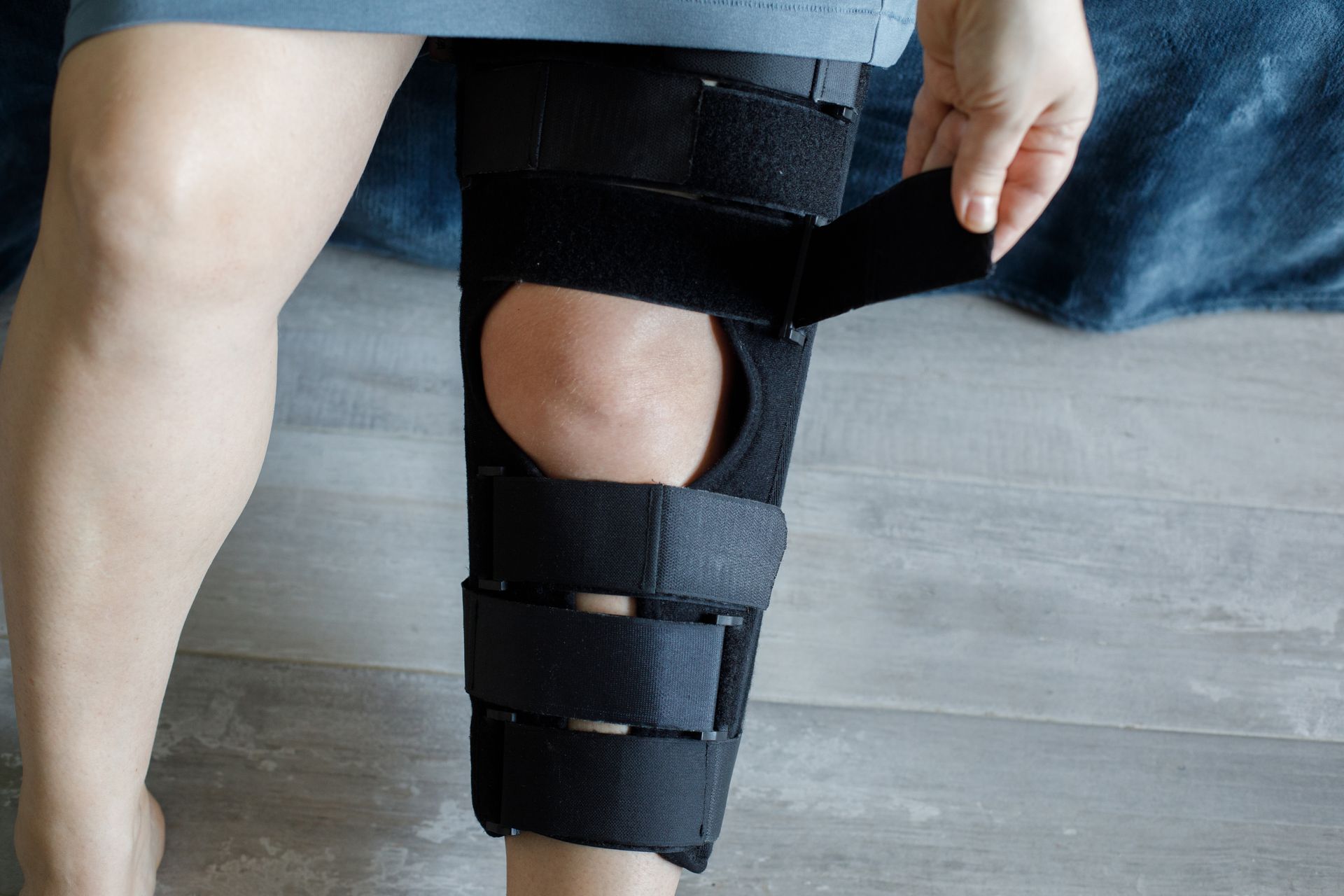Meniscus Tear Treatment in Baton Rouge
Meniscus Tear Overview
The knee joint contains two menisci. These wedge-shaped pieces of cartilage sit on either side of the joint, providing cushion and shock absorption between the shin and thighbones. However, when this cartilage is damaged, it can tear and result in problems such as pain and knee instability.
Causes of Meniscus Tears
There are two primary causes of meniscus tears: acute and degenerative. Key differences between the two are the nature of origin and the patient population most impacted.
- Acute Tears - Acute meniscus tears are the result of trauma causing the knee to forcefully bend or twist while in a weight-bearing position. This type of tear is most common in younger patients.
- Degenerative Tears
-
Degenerative menisucus tears occur as the result of gradual wear and tear of the meniscus over time. These are the most common form of meniscus tears and occur primarily in patients over the age of 40. As many as 60% of patients over the age of 60 will experience symptoms of a meniscus tear.
Types of Meniscus Tears
In addition to being acute or degenerative, meniscus tears can be further categorized based on their location and pattern. In cases where more than one pattern occurs, the tear is recognized as complex. Possible types of meniscus tears include:
- Bucket-handle
- Displaced bucket-handle
- Radial
- Horizontal
- Longitudinal
- Parrot beak
- Displaced flap
Additionally, tears can be graded I - IV in terms of severity and may be partial thickness tears or full thickness tears. All of these elements will help determine the most appropriate treatment option.
Symptoms of Meniscus Tears
When a meniscus tear occurs, patients may experience symptoms such as:
- Swelling or stiffness of the knee
- Popping sensation
- Pain (especially with movement of the knee)
- Difficulty straightening the knee
- A feeling of instability in the knee
Diagnosing Meniscus Tears
In order to accurately diagnose a meniscus tear, an orthopedic physician will conduct a full physical examination, typically followed by imaging tests. Methods used may include:
- McMurray Test - In this test, the physician will use one hand to hold the knee in a bent position while placing the other hand on the sole of the foot. The lower leg is then slowly rotated and extended. If a click is felt as the knee moves from completely bent to 90 degrees, a meniscus tear is suspected.
- MRI - A magnetic resonance imaging (MRI) test can produce detailed images of the tissues inside the knee, allowing physicians to see damage to the meniscus and any other surrounding structures. The accuracy of an MRI in diagnosing meniscus tears is about 70 - 95 percent.
- X-Ray - An x-ray will not be able to diagnose a meniscus tear. However, it may be used if your doctor suspects damage to other portions of the knee instead of or in addition to the meniscus.
- Arthroscopy - If the source of a knee injury cannot be satisfactorily determined using the methods above, your doctor may want to perform an arthroscopy in which a camera is used through a tiny incision to explore and visualize the knee joint.
Treatment of Meniscus Tears
The type of treatment needed for a meniscus tear will depend on its location, complexity and the nature of the tear. Many degenerative tears are manageable using more conservative methods, whereas an acute tear is more likely to require a surgical repair.
- R.I.C.E. - The R.I.C.E. method of rest, ice, compress, elevate is important, particularly in the days immediately following injury or the onset of symptoms. This will help keep complications such as pain and inflammation at bay while also preventing aggravation of the injury through weight-bearing.
- Medication - Medications such as nonsteroidal anti-inflammatories (NSAIDs) can help reduce pain and swelling in the joint. Injections may be required in some cases.
- Physical Therapy - Physical therapy may be used to help strengthen the surrounding muscles, providing the injured knee with greater stability and protection.
- Meniscus Repair-
Arthroscopic repair of a meniscus tear is possible in select cases where the tear occurs in the outer portion of the meniscus where there is adequate blood supply. When performed on the right type of tear and patient by a highly-trained orthopedic surgeon, results from meniscus repair are largely favorable, with positive results in the majority of cases.
- Meniscus Removal - If the tear is located in the inner section of the meniscus where inadequate blood flow inhibits healing and the condition is causing pain and inflammation that does not respond to other treatment options, a meniscus removal, or meniscectomy, may be considered. While this procedure does tend to deliver favorable results, it can also increase a patient's likelihood of developing arthritis later in life and should be considered carefully.
Meniscus Tear Specialists in Baton Rouge
JOSEPH E. BROYLES, M.D.
Joint Replacement Surgery
Hip and Knee Arthroscopy
Cartilage Regeneration
ARTHUR E. HESS, M.D.
Pediatric & Adult Orthopedic Trauma
Hip, Knee & Shoulder Reconstruction
Hip Preservation
Total Joint Replacement Surgery
Robot-assisted total knee arthroplasty
General Orthopedics
MATHEW J. MAZOCH, M.D.
General Orthopedics
Sports Medicine
Shoulder Surgery
ALAN C. SCHROEDER, M.D.
Shoulder Arthroscopy
General Orthopedics
Orthopedic Sports Medicine
RELATED READING







